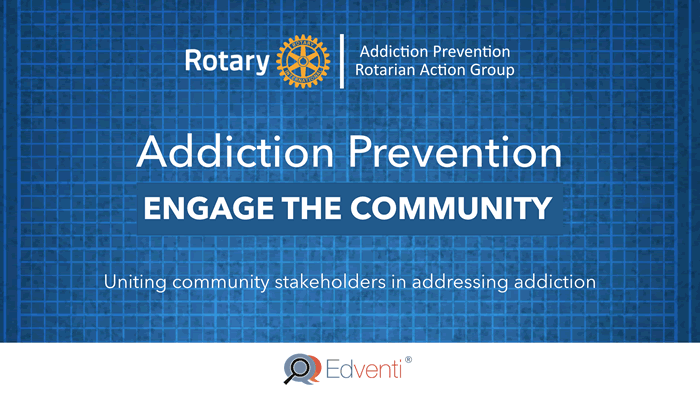Downloads
SLIDESHOW
To download the latest version of the Rotary Addiction Prevention Seminar - Engage the Community Slideshow, choose your file format of choice (Powerpoint, Keynote, PDF).
SAMPLE TIMELINE And agenda
Given the length of the videos and time it takes for discussion, the shortest length of time to execute the Engage the Community Seminar adequately is 3-hours. It is clear from the sample timeline agenda provided here that the schedule is fast-paced and tight to complete an event in 3-hours. Some clubs have extended the length of the event to four or more hours to allow for more thorough discussion and build in more time for a meal or networking. Some Rotary Clubs have worked with their public health professionals to deliver a series of five events called “community conversations” on each media topic. The series is executed as directed so not to compromise the instructional methodology where the films are shown in the following order: tobacco, marijuana, brain science of addiction, alcohol, and opioids. For each of the five events, the short film is featured followed by an expert or panel of professionals to provide further details on the subject matter.
The length of your event will depend on your planning team’s input for what will fit best for your community given the resources, opportunity and expertise available.
Download this pdf to see a sample TIMELINE for a 3-hour seminar.
Download this pdf to see a sample TIMELINE AGENDA for a 3-hour seminar.
OPTIONAL NEXT STEPS
Convene all interested parties to explore what is currently being done in your area, what problems unique to your community need to be addressed, where resources are particularly needed to advance addiction prevention strategies, and put a plan of action together.
Expand the reach of the Engage the Community Seminar by doing a series of local seminars with other target groups (e.g. parents or faith-based communities) that could benefit from understanding the seminar learning objectives.
Ensure that youth in your community are educated on the brain chemistry of addiction, and forces that seek to normalize drug use or downplay harms. See Appendix A for a school-based version of the Engage the Community program, with additional materials on healthy decision making, social norms, and other prevention education essentials.


